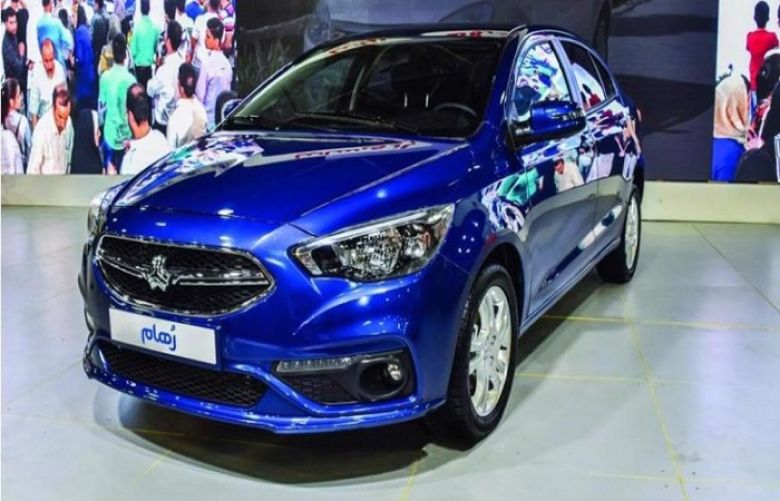Iranian automakers will produce more than 1.3 million cars next year, marking a 50 percent jump in production in the face of US sanctions, a deputy industry minister says.
Iran Khodro (IKCO) and Saipa are the two largest local manufacturers, which have picked up the slack since France’s Peugeot and Renault exited Iran along with other international companies in the wake of US sanctions in 2018, creating a supply crunch which saw car prices vault to unprecedented highs.
As the fallout from the sudden exit of foreign companies began to roll in, the two car makers pooled up local manufacturers of parts to produce Iranian-made vehicles. The defense ministry joined in to manufacture hi-tech auto parts which Iran used to import.
According to a local auto maker, 154 major auto parts have been internally produced, saving the country some 400 million euros in foreign exchange.
“To internally produce auto parts, we have started 82 in-house manufacturing projects with the Ministry of Defense and knowledge-based companies and the Vice Presidency for Science and Technology,” Saipa CEO Seyyed Javad Soleimani said Tuesday.
More than 100,000 people are employed by IKCO and Saipa, while another 700,000 Iranians work in industries related to car manufacturing. The auto industry is only second to Iran's energy sector, accounting for some 10 percent of the gross domestic product and 4 percent of employment.
When the Trump administration reimposed sanctions on Iran in August 2018, it reserved Washington’s first hammer blow for the car industry to hurt as many Iranians as possible.
Ironically, the US pressures helped domestic manufacturers thrive under the new situation through mobilizing their resources to fulfill some of the tasks which were an exclusive competence of foreign companies.
Local manufacturers are now producing a wide range of parts such as automotive immobilizers that allow the engine to start only with the vehicle's authorized key, electronic control units, oxygen sensors, electric seats, electric steering, six-speed automatic transmission, polymeric materials, modulators, injectors, airbags, multimedia, direct current (DC) motors, all types of electrical sensors and digital front amplifiers.
The K132 sedan, the first Iran-made car using 90% locally-manufactured parts, is about to roll off the IKCO’s mass production line in February. IKCO's rival will produce Saipa Shahin compact sedan, which is 92% reliant on locally-manufactured parts.
However, Iranian manufacturers are worried that a possible opening in Tehran's ties with the West after Trump leaves office could lead to the return of foreign car makers and send them back to square one.
In the past, despite pledges of tough reckoning by Iranian officials, foreign companies have had little trouble whenever they have decided to return to Iran’s massive auto market, pushing the local manufacturers to the sidelines.
Peugeot and Renault were among the first European companies which rushed to Iran to tap a pent-up demand for new automobiles after sanctions were lifted on the country in 2016.
Peugeot signed production deals worth 700 million euros with Iranian counterparts, while Renault had announced a new plant investment to increase its production capacity in Iran to 350,000 vehicles a year.
Their withdrawal in 2018 was their second cut and run departure after they suddenly left Iran first in 2012 when the country came under intensified Western sanctions.
Iran’s automotive industry officials had promised that the French companies would face a rough ride for their return to the country and that they would not be allowed to leave without retribution.
Their second pullout, even though they did not have a significant presence in the US, followed similar moves by French energy companies Total and Engie and Germany's Daimler AG, the maker of Mercedes-Benz trucks and luxury cars.
They joined jet makers Airbus and Boeing to slam the door in Iran's face after President Donald Trump decided to impose sanctions on Iran following his withdrawal from the 2015 nuclear deal.
On Tuesday, Iran’s Deputy Industry Minister Mohsen Salehinia apparently sought to assure that local manufacturers would not be given a short shrift this time if another opening with the West took place.
Iran’s “automakers will produce more than 1.3 million cars next year,” he told a meeting of the National Production Support Commission with manufacturers.
“The goal is to have a 50% jump in car production from the beginning of Day (December 21, 2020) to Tir (June 22, 2021) next year for six months,” he said.
Secretary of Iran’s National Space and Advanced Transportation Administration Manuchehr Manteghi said at present, the price of domestically produced cars is more than 6,000 dollars, which can be reduced by better sourcing of local capabilities.
“If low-tech component manufacturers are assembled together, with the right investment, they can reduce their finished costs,” he said.
In his administration, Manteghi said, Iranian experts are currently re-engineering some cars in an effort to use domestic products such as steel.
“With regard to advanced parts, we will also move towards the use of domestic technologies and domestic production,” he added.
According to Saipa CEO Soleimani, each Iranian-made car uses up some $2,000 of foreign exchange, including $600 in imported raw materials which the country is trying to substitute with local products.







